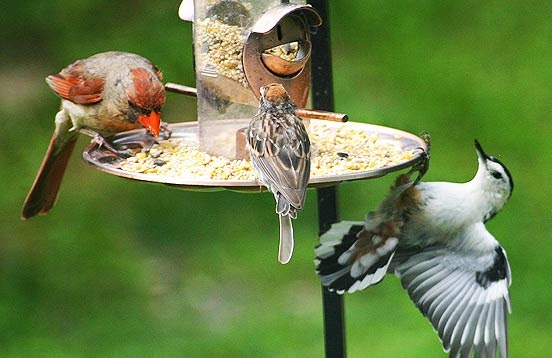Grilling out is one
of the many joys of the summer. First, when you use a gas grill, you don't have to heat up
your kitchen – which causes the whole house to heat up. Second,
you get that special taste that you can only get from the direct heat
of a flame. Third, grilling out is a great way to entertain and
socialize – from planned parties to impromtu gatherings of
neighbors. All you need is quality food and a great gas grill.
I often use the
terms “barbequing” and “grilling” as synonyms, but, in fact,
they are not the same thing. The differences are in the type of heat
and the cooking time. Grilling is done with direct heat, that is
moderately hot to hot. The food is cooked quickly. This is the
method you are using if you are cooking a burger or a steak on your
grill.
Barbecuing, on the
other hand, is done by indirect heat, often with smoke, and the food
is cooked for a long time. If you are cooking ribs, or a whole hog,
then you are barbequing.
Of course, there are
regional variations for what each of these terms mean. In Britain,
for example, the term barbecuing means the fast cooking process over
high heat. And grilling in the U.K. is what folks in the U.S. call
broiling. Sometimes, people use the terms barbequeing and smoking
as synonyms. Even the spelling of barbecue is up for debate –
barbecue, barbeque, bbq, barbie – are all variations.
One of the
inventions that made grilling so ubiquitous was the Weber grill,
which was invented in 1952 by George Stephen, Jr. By creating a
cover for the grill, the food and flame were protected from the
elements. Plus, the cover sealed in the heat and the smoke, which
allows the food to cook evenly while soaking up that great smoky
flavor.
 |
| Weber Grill |
Nowadays, grills
range from very simple devices to complex cooking technology. I
remember the cast iron hibachi that my family used to use. It was
low to the ground and used charcol briquettes. You can still use
charcol, or you can use propane or even natural gas. I think that
having a grill where the cooking surface is elevated to waist height
is the way to go. You can purchase a grill on a stand, or set a
smaller model onto a fire-proof tabletop. The most imporant aspect
of a grill is that it is sturdy. You don't want it to tip over. So,
give the grill a nudge from several different angles. It should
remain solidly in place. With safety in mind, also check out the
handle. You want enough room between the handle and the lid so that
your knuckles and fingers don't get burned.
Gas grill options
are abundant. The main cooking surface is for burgers, hot dogs, and
steaks. If you are planning to slow cook a chicken, then you will
want a rotisserie burner. Side burners are excellent to use for
keeping foods warm or slow cooking a side dish. Another option to
look for is an infrared burner. This technology uses heated surfaces
to radiate the heat to the food. While cooking with infrared burners
takes some practice, Consumer Reports found that
63% of people who had grills with infrared burners used them
regularly.
So, once you have
chosen your gas grill, stock up on some long-handled grill tools,
break out your favorite foods, call up some friends, and let the
party begin!







